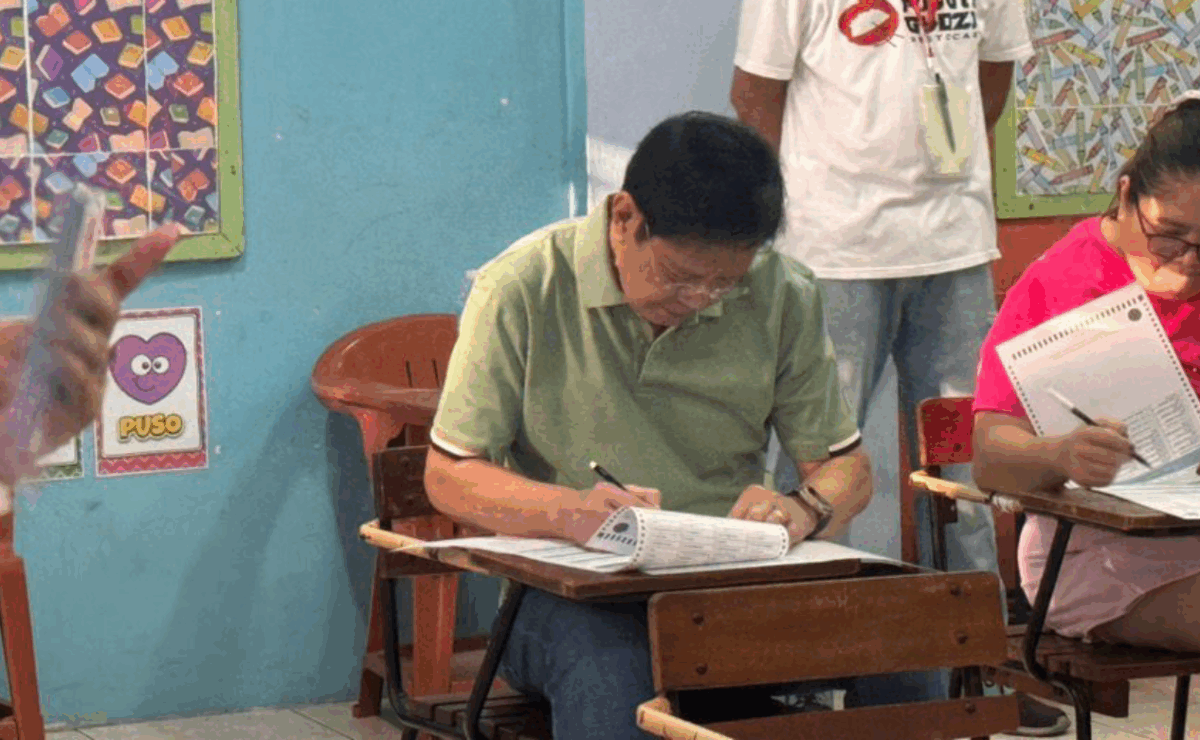Lacson experiences glitch with voting machine
Follow our 2025 Election live updates here.

Senatorial candidate Panfilo Lacson votes at a school in Imus, Cavite on Monday, May 12, 2025. — Photo courtesy of Panfilo Lacson’s office
MANILA, Philippines — Senatorial hopeful Ping Lacson said he experienced a minor glitch when he cast his vote in Imus, Cavite for the 2025 midterm elections.
In an ambush interview on Monday, Lacson said his ballot was not immediately accepted by the automated counting machine.
“There was a little glitch. Because [my ballot] wasn’t accepted at first. I was told there were many returns. He flipped it over, put the back page first, it got in,” said Lacson when he was asked to share his experience with the new voting machine.
“I hope they can resolve minor issues like that. Because others, maybe they can’t wait, maybe they’ll just leave, never come back,” he added.
In March 2024, the Commission on Elections (Comelec) and the South Korean firm Miru Systems Co. Ltd. (Miru Systems) inked an almost P18-billion contract for the lease of an automated election system to be used in the 2025 midterm elections.
Miru Systems was the sole bidder for the lease of a Full Automation System with Transparency Audit/Count (Fastrac) to Comelec.
READ: Comelec, Miru ink P17.99 B pact for automated 2025 polls
The contract includes the supply of 110,000 automated counting machines, election management systems, consolidation and canvassing systems, ballot printing, ballot boxes and other peripherals.
Comelec, for its part, said a hardware acceptance test was conducted on the machines. The poll body explained that other components of the machines — including the battery load operation, touch screen, scanner, printer, camera, audio, smartcard port, LED (light emitting diode), sensor, external keypad, network and HDMI (high-definition multimedia interface) — underwent a thorough testing./das


















